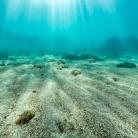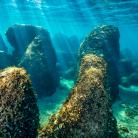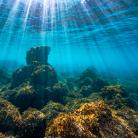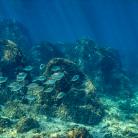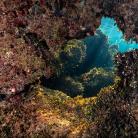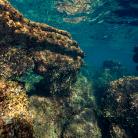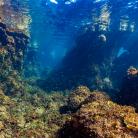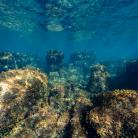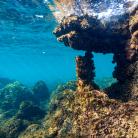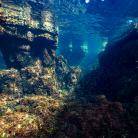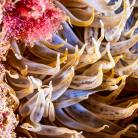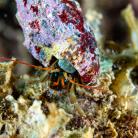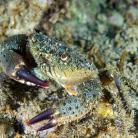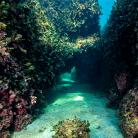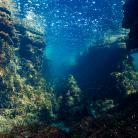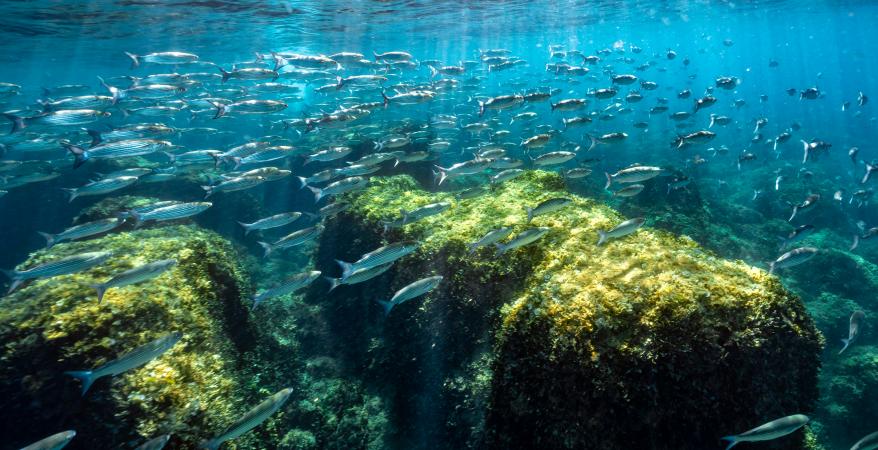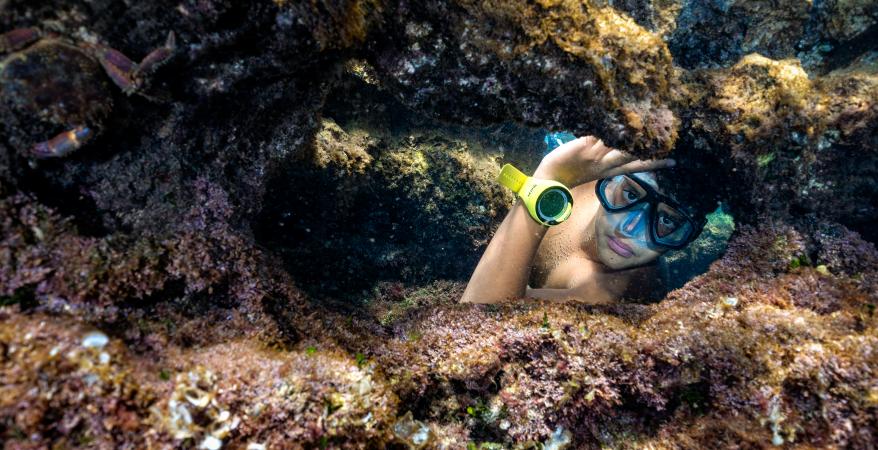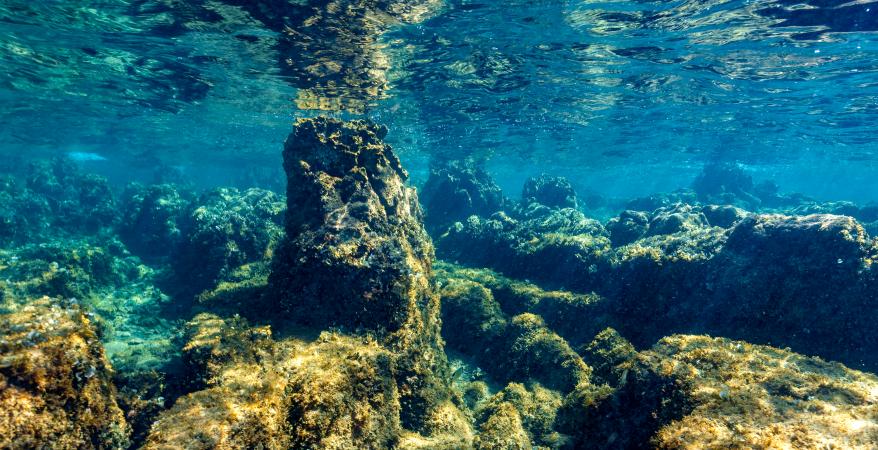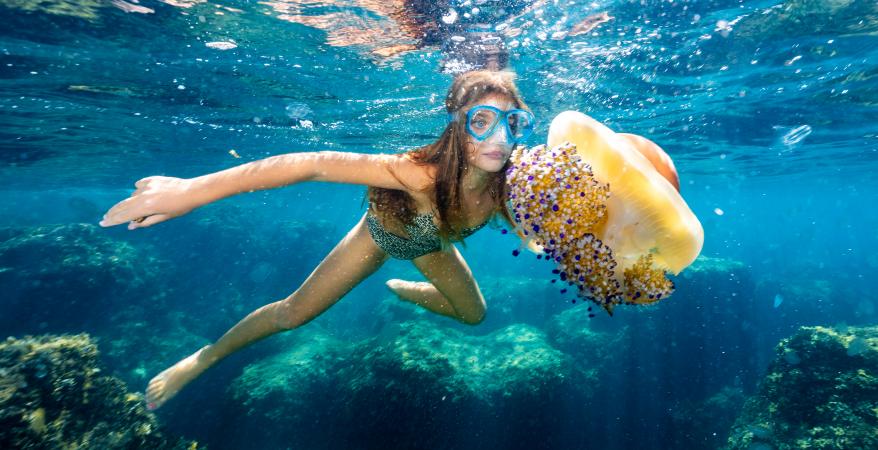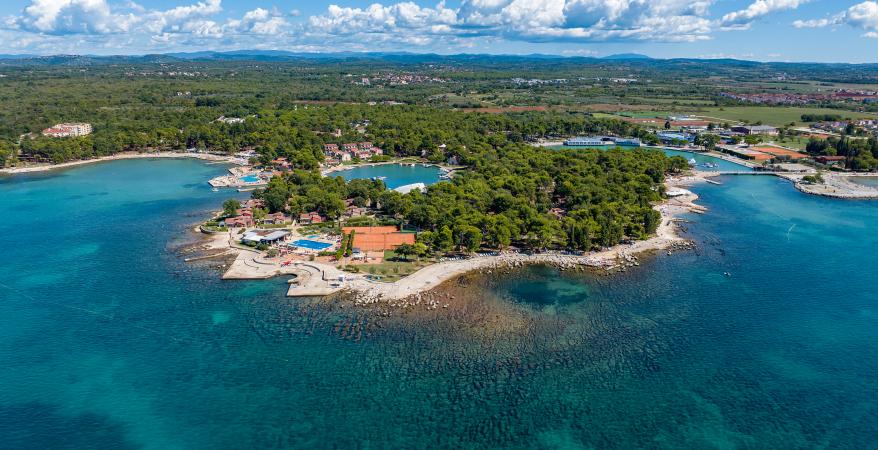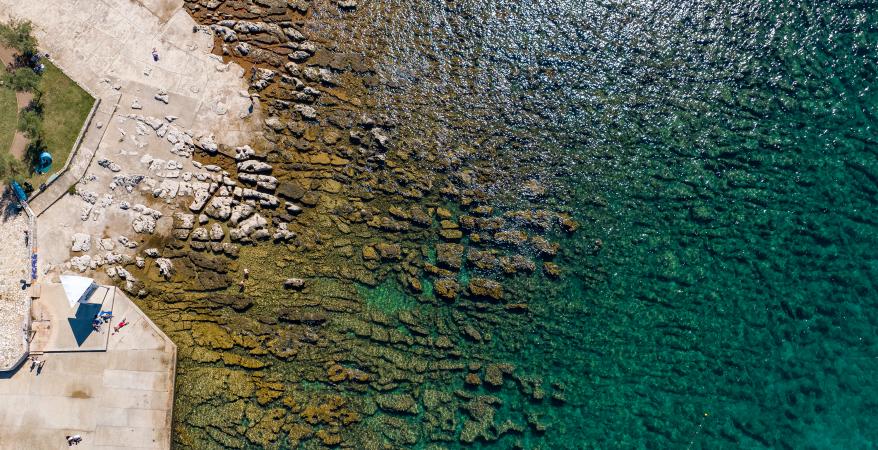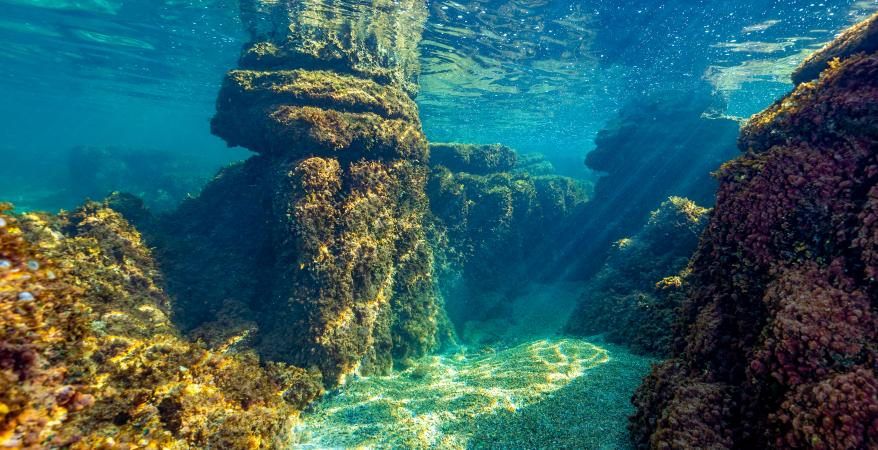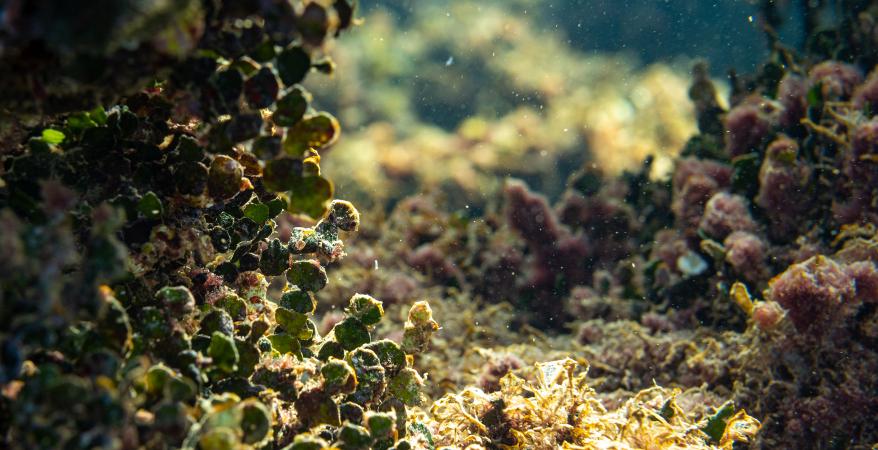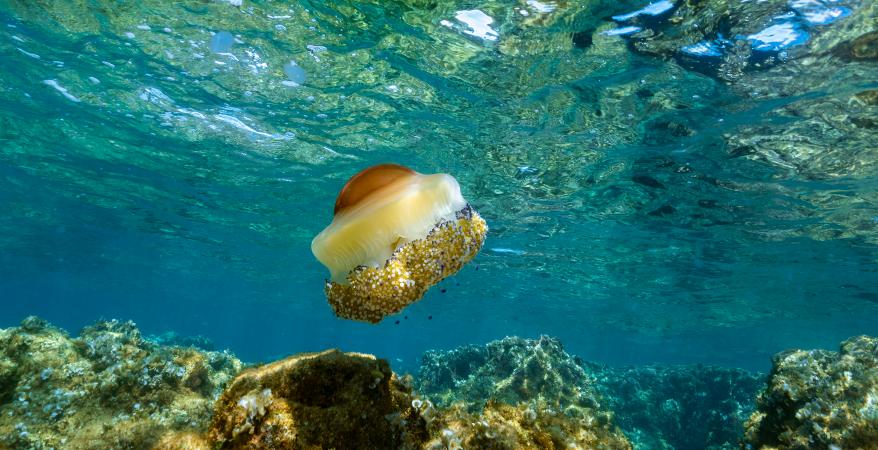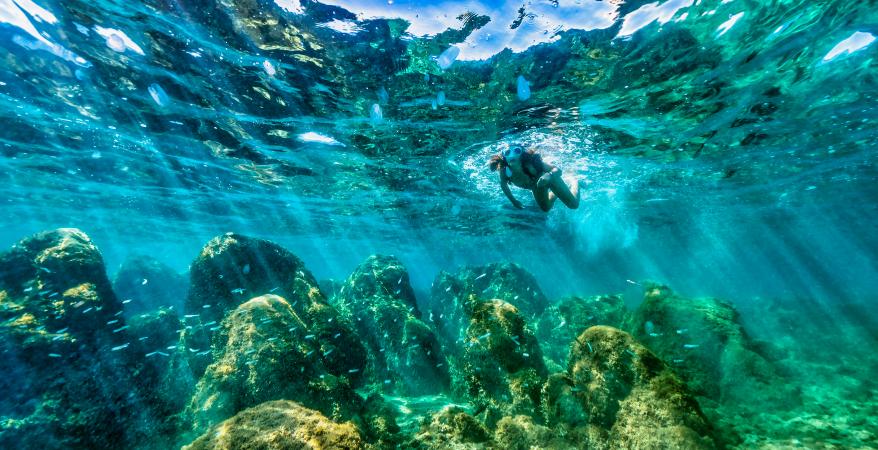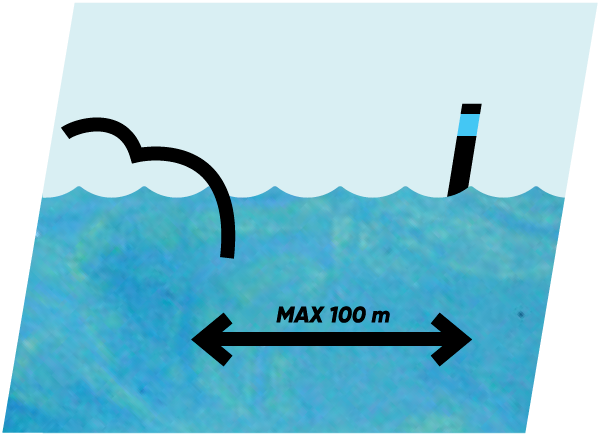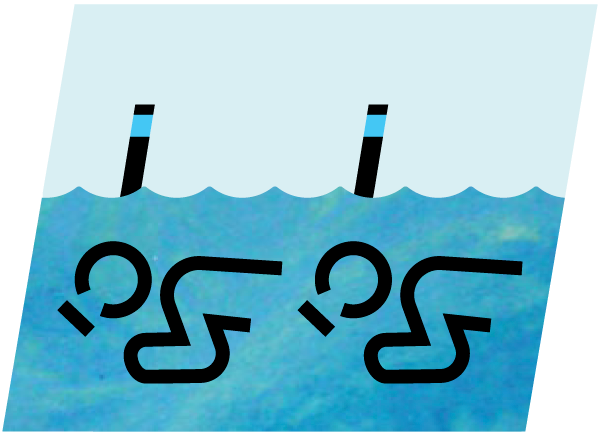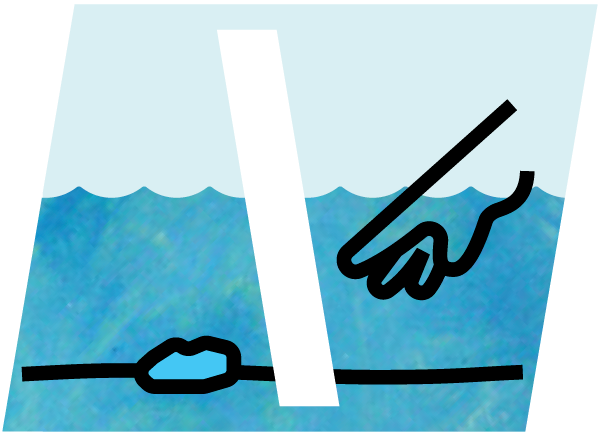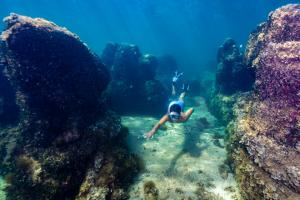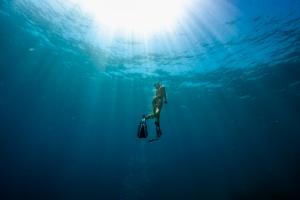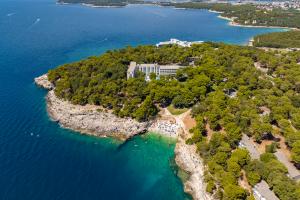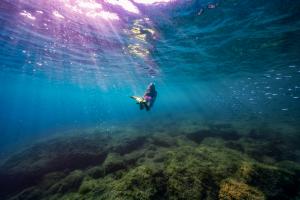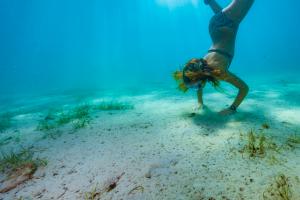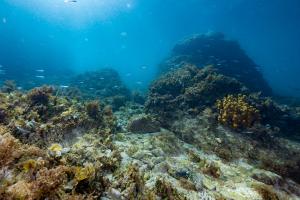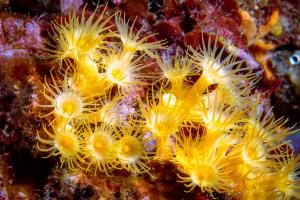Rt Monterol
The Rt Muntarol snorkeling location at Cape Muntarol is located in Umag's popular Stella Maris resort, right in front of the tennis courts overlooking the open sea. The easiest way to get to the location is by the coastal promenade that surrounds the tourist resort. In front of the tennis courts there is a wide sunbathing area with several steps for getting into the sea. One can easily recognize the snorkeling location by the rocks protruding from the sea. If you observe them carefully from the shore, you will notice that they extend towards the open sea in the shape of stone fingers.
As soon as you get into the sea, you will find yourself in a shallow stone labyrinth teeming with life. But to get to the most interesting part, swim towards the rocks you saw from the shore. You will reach the right place when you see the rescue watchtower in front of you, located on the very edge of the sunbathing area, and in the distance a tall building on the right side that can serve as a second landmark. Then look under the surface: stone streets formed by rocks protruding from the sea will appear before you.
Although Cape Muntarol is one of the shallower snorkeling locations, only 2 meters deep on average, it hides amazing rock formations with small, hidden windows and passages. Rocks take most interesting shapes. For example, one looks like a Roman arch with two windows under the porch, while the other has a column supported by a roof. Wherever you go, follow the path and slowly move through the alleys and passages, because at every intersection you can surprise the young fish who hide there.
These interesting rocks are a safe hiding place for many fish and crustaceans because they are rich in small tunnels, and above all food. When you get closer to the rock, take a break and observe the algae. After a short while, you will notice that every rock has rich groves of green, brown and red algae of various forms. Some are bushy, others have fan-like leaves or those resembling small waterfalls, while some look like small trees in a shape of a fir or lettuce. The base of the rocks, depending on sun exposure, may be covered with a soft moss-like carpet. If the algae are found in dark and shady parts, they can turn wine red, and if they are more exposed to the sun, they develop all shades of pink and even the colour of vanilla. Algae are the foundation of the marine food chain and are important for the production of oxygen in the sea.
Here you can also find a sponge called "little sea orange (puffball)" because it really resembles a little orange. As it grows in shallow, shadowy parts, it is also darker, almost brown, but with an orange colour protruding like glowing lava from it. Sponges are sedentary animals, with snails as their greatest enemies as they feed on them.
Below the bottom of the stone paths there are secret, tight passages in which the comber, five-spotted wrasse and dark patterned pointed-snout wrasse hide. They are very curious fish. If you are not in a hurry, they will tell you where they live because they always return to their home.
Located on the Cape itself, this snorkeling location is known for its dense fish traffic, especially outside the stone labyrinth. Do not be afraid if a large shoal of mullets swims by you, but relax and enjoy - the scene is phenomenal!
The sea currents also bring the Mediterranean jellyfish to Cape Muntarol that you can't help but notice. Its specific bell has a round brown protuberance in the middle resembling a hat. Below it are tentacles with blue and white balls at their end, providing a refuge for little fish. Don't worry - it's harmless, swims very slowly, and it's really interesting to watch.
Explore safely
Those who want to explore more than described, must keep in mind that the safest snorkeling is the one inside the protective barrier, marked by a floating line.
In front of the sunbathing area, towards the north, the bottom is sandy and strewn with large stones. It's a real challenge for the curious to find arches that can be swum through. There are a few, located near a stone maze representing an excellent search game. Here you can also see the sand steenbras, recognizable by the elongated body of light colour and small transverse stripes. They swim in small groups, roam the bottom in search of food and are always followed by a thick cloud of sand.







